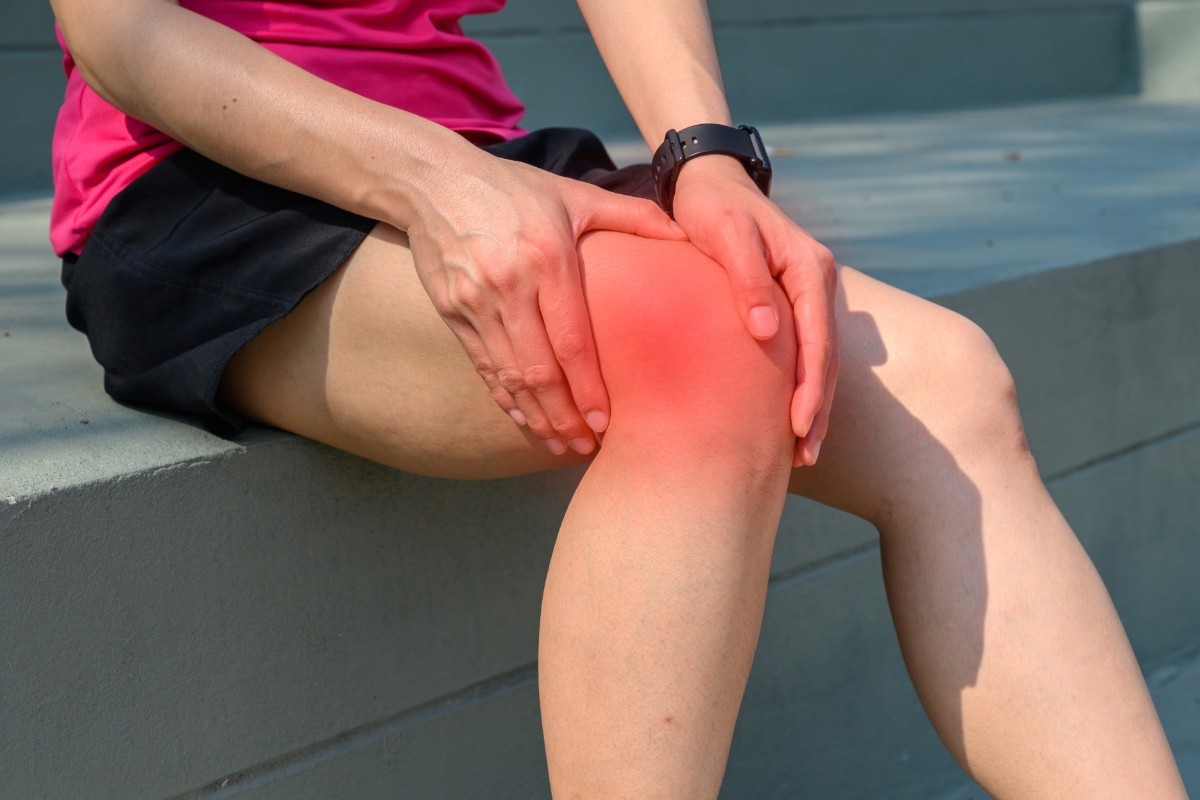
IT band syndrome is most often associated with running injuries. It’s one of the most common injuries due to running or sports that require running. Unlike a tear or fracture, IT Band syndrome often doesn’t require a long recovery time and is even preventable most of the time. It’s not an acute injury, but rather an injury caused by overuse.
Also called ITBS (iliotibial band syndrome), the injury occurs when the connective tissue that runs from the outside of the hip to the outside of the knee becomes tight or inflamed due to overuse and overtraining. The result is pain and difficulty moving, even preventing you from walking if the pain is severe enough. Usually, most of the pain is concentrated in the knee. However, IT Band syndrome can also present pain and symptoms from the lower back down to the ankle depending on the severity and how you compensate for the pain.
What Are The Symptoms Of IT Band Syndrome?
More often than not, people who have ITBS experience pain out the outside of the knee. This is especially the case with weight-bearing movements that require a bend in the knee, such as climbing up and down the stairs. Because the pain is often concentrated in the knee, most people think they have a knee injury. A knee injury, however, would have swelling around the knee. Lack of any swelling is one of the surest signs that your knee pain is caused by your iliotibial band and not an injury in the knee.
Because most of the pain is in the knee, people may often try the RICE treatment to heal or manage the pain. However, this will do little to solve the problem if the knee isn’t swollen and the pain is the result of a tight IT band.
What Causes Iliotibial Band Syndrome?
Unlike many other injuries that are the result of accidents, slips, and falls, IT Band syndrome can make it difficult to determine the cause. However, the culprits of the syndrome often depend on the sport or activity. For example, track runners will often get ITBS if they run in the same direction day in and day out. This is because the IT band can become inflamed if the leg is turned inward repeatedly like it does when turning a corner or running on a track. Unsupportive shoes and running on uneven surfaces can also result in ITBS.
A big culprit that can lead to ITB syndrome is weak glutes and hips, and even a weak core can affect the tightness of the IT band. Poor control and weak muscles in the glutes, hips, and core creates more stress on the knee joint. This stress leads to instability, joint dysfunction, and pain in the knee. Researchers have even found that the knee was substantially decreased when the hips, glutes, and core were strengthened.
How To Treat & ITBS
The best way to treat ITBS is to take a break from activities that cause you pain. Resting, stretching, and ibuprofen can help with the pain and heal the problem completely. Without rest, ITBS can and will become chronic, even worsening to the point that you’ll need medical help.
If after a few weeks of taking care and resting your pain has still not subsided, it would be beneficial to see a physical therapist who can better assist with recovery. However, even with rest and physical therapy, ITBS can return if you don’t change what caused the problem.
A physical therapist is going to notice that the ITBS was the result of weak hips, glutes, and core. Strengthening those muscles, then, will prevent the syndrome from returning. Furthermore, changing how you train will also prevent it. For example, if you often run the same direction on the track, changing direction will prevent ITBS. Running on even surfaces will also prevent it, as well as ensuring you’re not overtraining.
